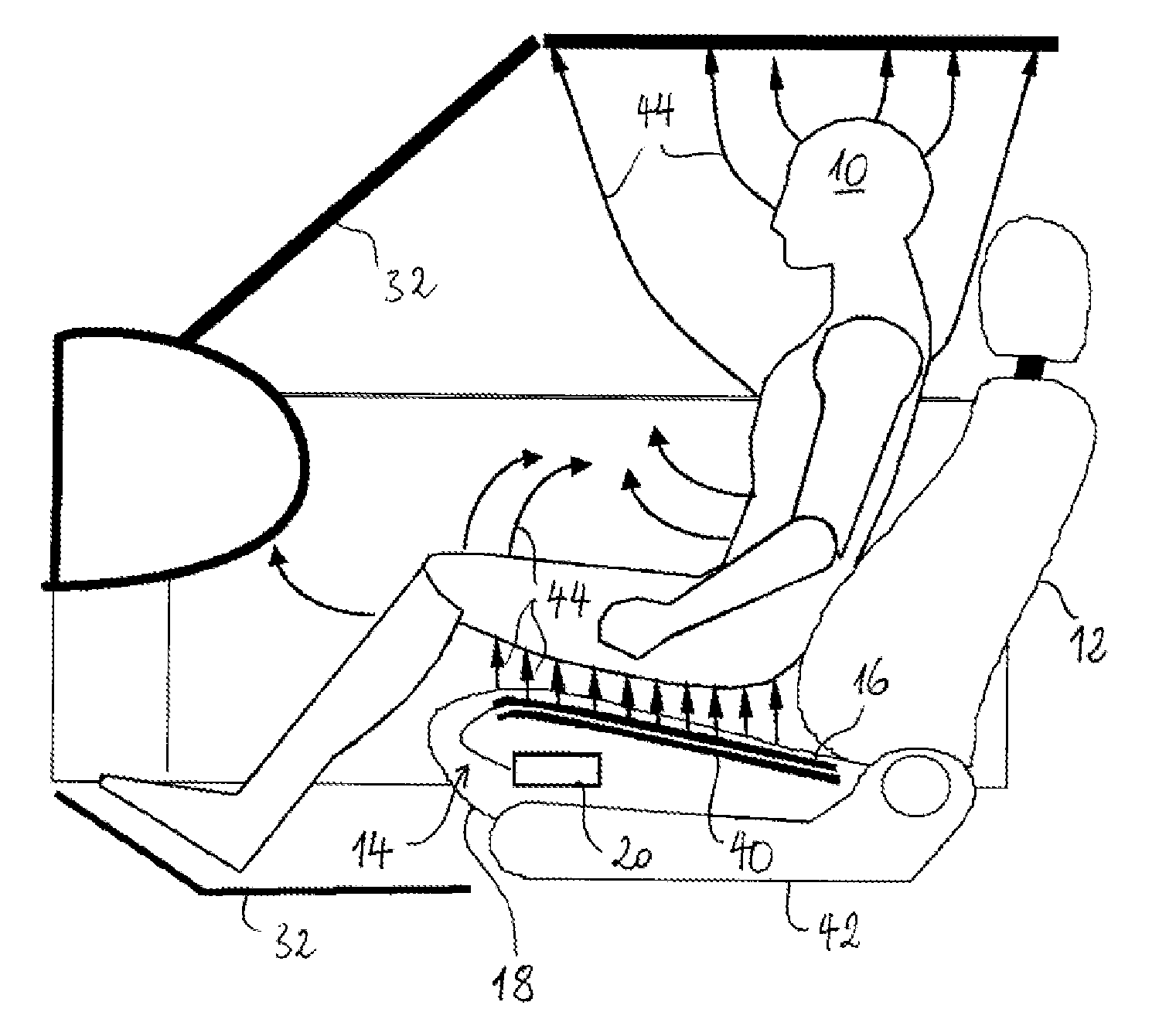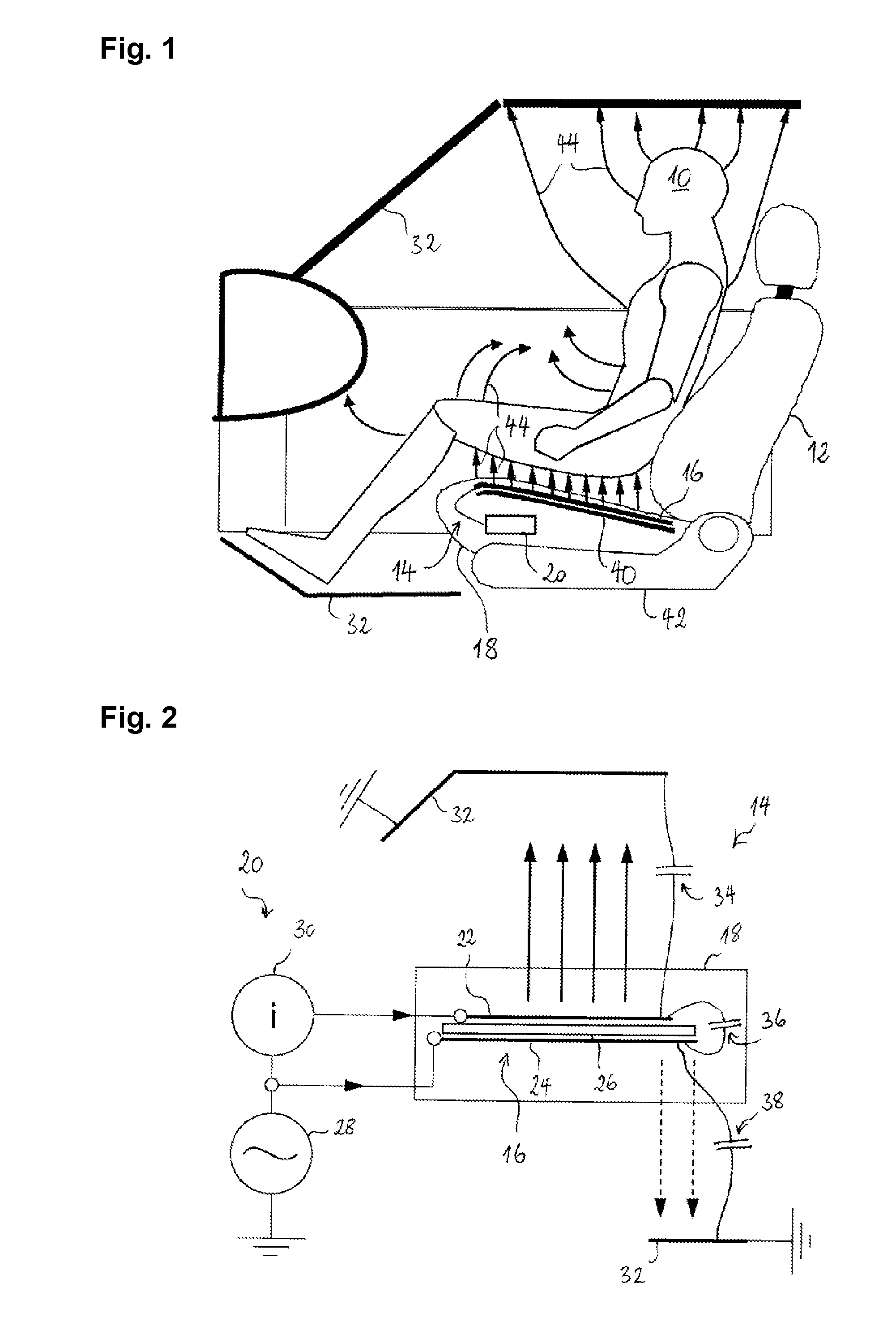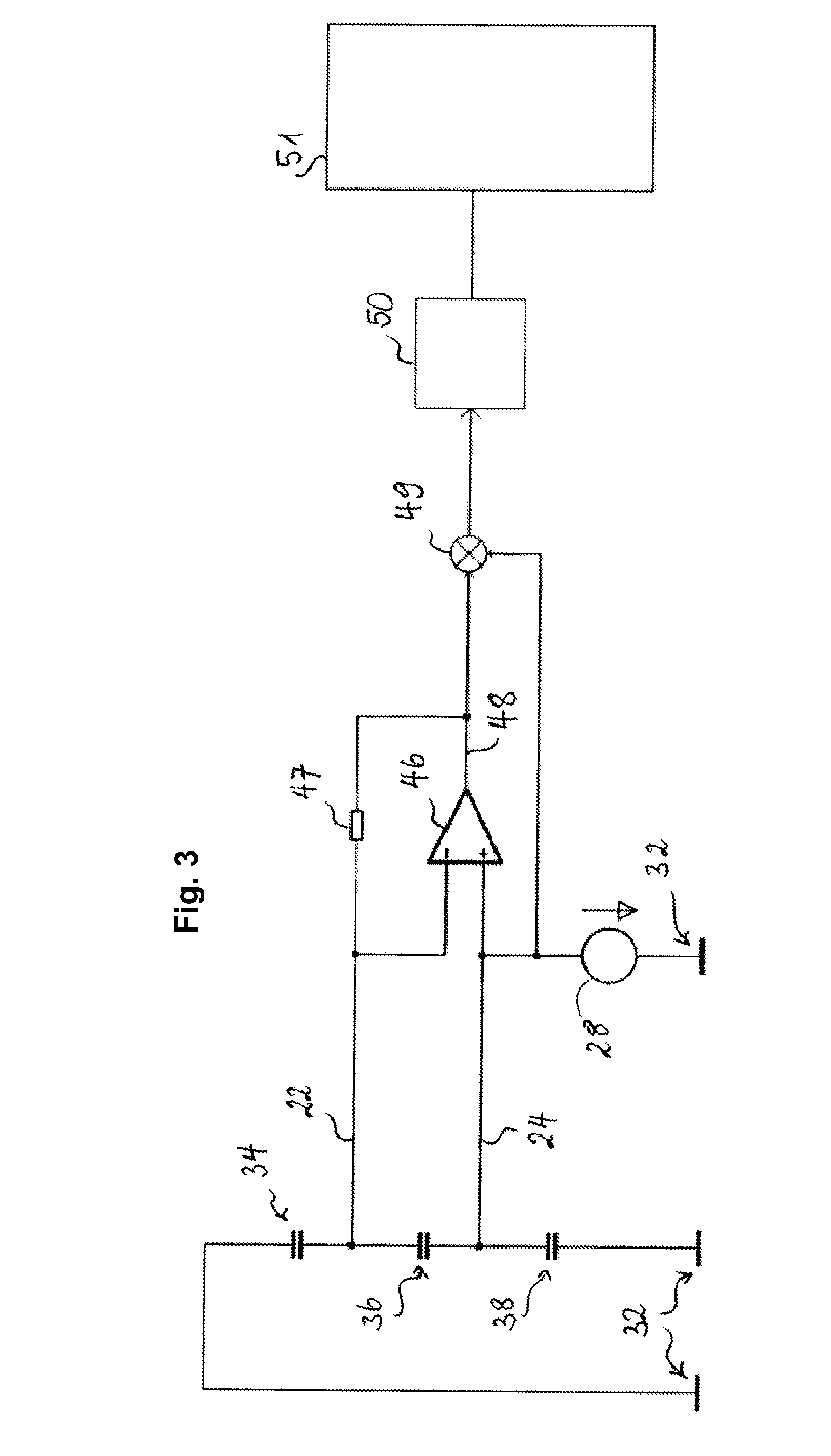Method and system for detecting an occupancy state of a vehicle seat
- Summary
- Abstract
- Description
- Claims
- Application Information
AI Technical Summary
Benefits of technology
Problems solved by technology
Method used
Image
Examples
first embodiment
[0029]FIG. 3 shows a (simplified) equivalent circuit diagram of a capacitive occupant detection system. Oscillator 28 applies an AC voltage to the shield electrode 24. Amplifier 46 and feedback impedance 47 form together a transimpedance amplifier, which maintains the voltage on the antenna electrode 22 substantially equal to the voltage on the shield electrode 24. The transimpedance amplifier thus converts the current flowing into the antenna electrode 22 into a voltage at the amplifier output 48. Since the antenna electrode 22 is at any moment of this measurement at substantially the same potential as the shield electrode 24, the current through the second capacitance 38 remains essentially zero. Therefore, the current flowing into the antenna electrode depends almost exclusively only on the first capacitance 34. Mixer 49 and low pass filter 50 convert the AC output of amplifier 46 to a DC voltage, which is dependent on the first capacitance 34. This voltage is fed to an analog-to...
second embodiment
[0032]FIG. 5 shows a (simplified) equivalent circuit diagram of a capacitive occupant detection system. In this embodiment, the electrode arrangement comprises only a single antenna electrode 22 and no shield electrode. Oscillator 28 applies an AC voltage to the non-inverting input of amplifier 46 and feedback impedance 47, forming together a transimpedance amplifier, which maintains the voltage on the antenna electrode 22 substantially equal to the voltage output by the oscillator 28. The transimpedance amplifier thus converts the current flowing into the antenna electrode 22 into a voltage at the amplifier output 48. The current flowing into the antenna electrode 22 depends almost on the capacitance 34 between the antenna electrode and vehicle ground 32. Mixer 49 and low pass filter 50 convert the AC output 48 of amplifier 46 to a DC voltage, which is dependent on the capacitance 34. This voltage is fed to an analog-to-digital converter (ADC) input of a microcontroller 51. The mix...
third embodiment
[0033]FIG. 6 shows a simplified equivalent circuit diagram of a capacitive occupant detection system. In this embodiment, the occupant detection system comprises a first antenna electrode 22 and a second antenna electrode 122. One of the antenna electrodes 22, 122 is preferably arranged in the seating portion of the vehicle seat, whereas the other may be arranged, for instance, in the seat back, the foot well or the dashboard. The oscillator 28 is operatively connected to the first antenna electrode 22 and applies thereto an oscillating voltage, when the system is operating. The second antenna electrode 122 connected to the inverting input of an amplifier 46, which forms, together with impedance 47, a transimpedance amplifier. The latter amplifies the current flowing in the second antenna electrode in response to an oscillating voltage being applied to the first antenna electrode 22. Mixer 49, which is operatively connected to the oscillator 28 and the transimpedance amplifier, and ...
PUM
 Login to View More
Login to View More Abstract
Description
Claims
Application Information
 Login to View More
Login to View More - R&D
- Intellectual Property
- Life Sciences
- Materials
- Tech Scout
- Unparalleled Data Quality
- Higher Quality Content
- 60% Fewer Hallucinations
Browse by: Latest US Patents, China's latest patents, Technical Efficacy Thesaurus, Application Domain, Technology Topic, Popular Technical Reports.
© 2025 PatSnap. All rights reserved.Legal|Privacy policy|Modern Slavery Act Transparency Statement|Sitemap|About US| Contact US: help@patsnap.com



